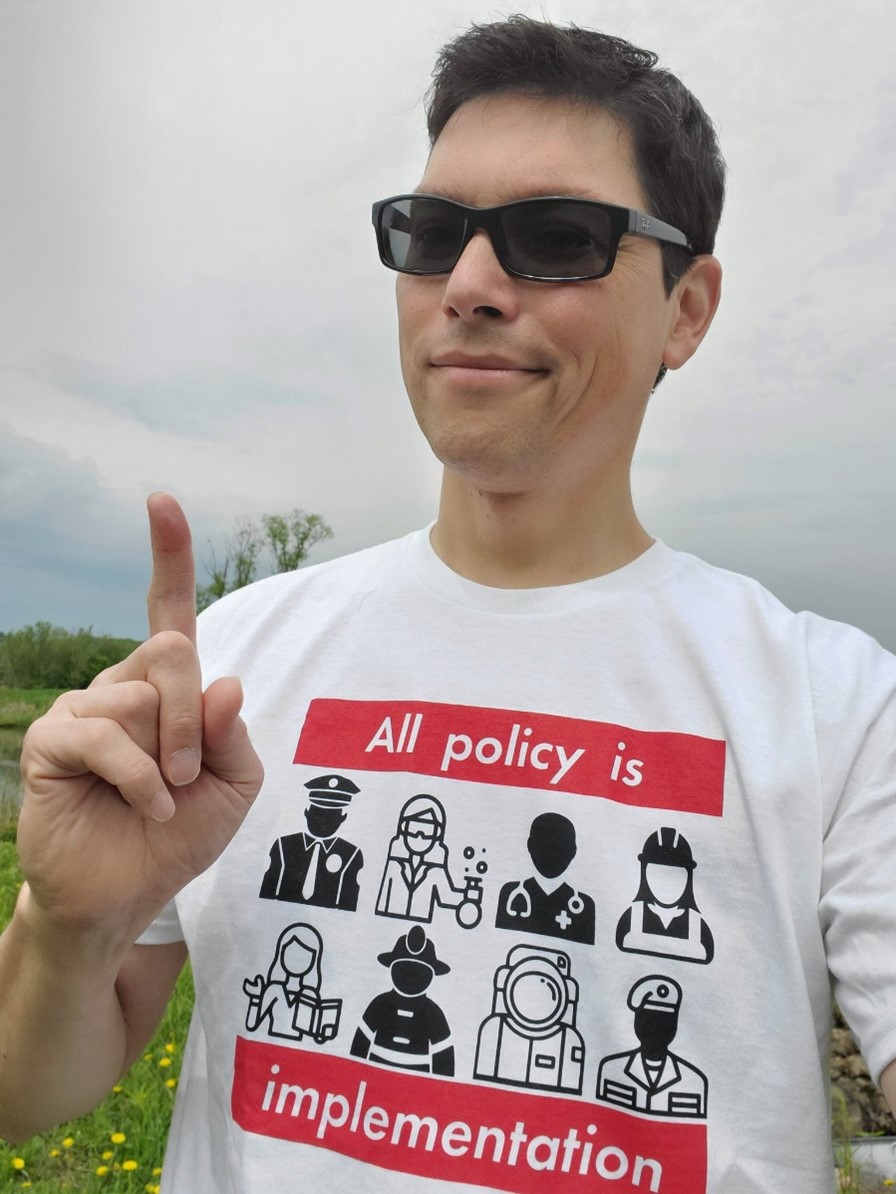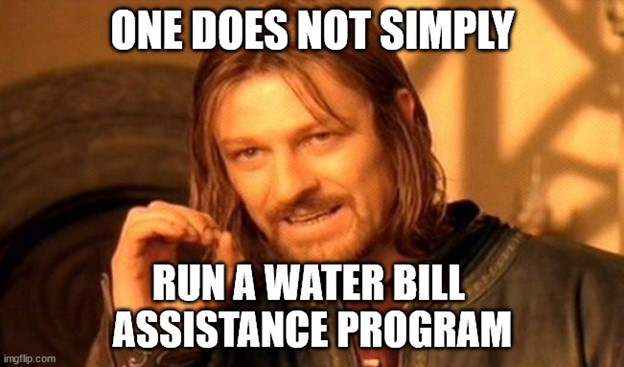Administratively costly assistance programs can hurt more than they help
Water and sewer affordability is a complicated challenge that demands a multifaceted solution; to meet that challenge, I’ve developed five pillars of affordability that offer utility leaders a practical way to think about affordability comprehensively and strategically. Previous posts described the first three pillars of affordability—quality, efficiency, and rate design. This post continues my series on the fourth pillar of affordability: income-qualified Customer Assistance Programs (CAPs).
The first in the series discussed CAP eligibility, and the second addressed how much assistance CAPs should offer. But as with any public policy, CAP success or failure turns on implementation, and so now we turn to administration. We’ll start from the utility’s perspective; next time we’ll look at administration from the customer’s point of view. There are many ways to administer CAPs, but in keeping with the themes of this series, the key here is simplicity.
Simplicity is critical for the vast majority of American utilities that have very limited organizational capacity. Two-thirds of U.S. municipal utilities have fewer than ten employees; 95% have fewer than 100 employees.
Five Parts
Managing a CAP involves at least five processes: outreach, intake, benefits distribution, renewal, and audit/appeals. The usual caveat applies here: there’s effectively no rigorous, systematic evidence out there about what works and doesn’t work when it comes to managing a CAP, so what follows is based on observations and anecdotes, and on what we know from other kinds of income-qualified programs.
- Outreach. Customers can’t participate in a CAP if they don’t know about it. A utility CAP isn’t a Field of Dreams—people won’t magically show up to participate following the program’s launch. I’ll have more to say about outreach in the next post in this series; for now the important point is that a successful CAP requires significant outreach and communication effort
- Intake & data management. Likewise, creating a utility CAP requires careful thinking about how customers will sign up and qualify. Again, I’ll have more to say about intake processes in the next part of this series. For now, I want to stress the importance of confidentiality and data security. CAPs that involve information on household composition, income, health, and other personal data can expose the utility to data breaches. Potential CAP participants must be confident that utilities will keep their identities and confidential information secure. Research on data breaches in commercial industries demonstrates that such events negatively impact customer trust—even for customers who do not personally experience identity theft or losses from data breaches. These considerations are just more reasons to keep things simple.
- Benefits distribution. The distribution of benefits should be integrated into billing and accounting systems, minimizing the customer service staff effort required to assign benefits to customers.
- Renewal. Similarly, renewal processes should be automated to the extent possible to reduce required staff effort and opportunities for mistakes.
- Appeals & audits. Designers of assistance programs seldom think about the “back end” processes that accompany any benefit program. Any program that involves distinguishing between eligible and ineligible populations will eventually deny some applications, or award lower benefits than customers believe that they deserve. Utilities must establish fair and transparent processes for handling such appeals in advance. Once again, simpler eligibility rules and benefits levels will make these appeals processes easier.
Just so, any public benefit program will eventually be subject to scrutiny by auditors or political officials who want to guard against waste and fraud. Simple eligibility rules and benefits levels limit opportunities for mischief and simplify audit processes.
Third party administration?
Since utility organizations are generally not set up to run social services programs, some utilities contract with community action agencies to handle CAP outreach, intake, and renewal processes. The logic behind such arrangements is that these organizations specialize in administering housing, food, and energy assistance programs, and have experience working with low-income populations that might benefit from CAPs. Some social services organizations may enjoy greater trust with their communities than utilities that are associated with governments.
In the best-case scenario, nonprofit community action agencies “one-stop shops” for low-income households that need various kinds of assistance, and so draw in participants who otherwise might not apply.
The relative effectiveness and efficiency of such third-party arrangements are unclear; studies of community action agencies in managing other kinds of assistance programs yield mixed results. And of course, community action agencies have their own management problems. Importantly, social service organizations do not administer water/sewer CAPs for free—community action agencies carry reasonable administrative costs, and utilities should expect to pay significant fees or retainers their services. Outsourcing administration thus creates an ongoing service contract that utility personnel must manage. Water/sewer CAPs are likely to be a very small part of any community organization’s work, and so promoting those programs is unlikely to be a high priority for them. I’ve seen contracting problems cause these third-party agreements to fail due to such problems.
So working with community action agency might be a good way to administer a water/sewer CAP, but it’s not a costless or universally preferred model. As always, rigorous research on this point is needed to understand the benefits and drawbacks of third-party administration.
The hard truth and why efficient administration matters
The single most important thing about administering a water/sewer CAP in the United States is that even very well-run programs reach only a small minority of eligible households, and all of them miss a significant portion of eligible households. Although I’ve heard of a few cases of U.S. utilities that achieve participation rates of 50% or more, most get something like 20-30% participation. Many get far lower participation. A utility can do everything right and still miss most of the customers who need help.

is this your assistance program?
When utilities use rate revenue to fund CAPs, participants are effectively subsidized by all other customers—including poor non-participants. If a utility must raise rates to pay for an assistance program, then low-income households that do not participate will end up paying higher prices than they did before the utility created a CAP.
The same is true for people whose incomes are just above eligibility thresholds, or whose immigration status precludes participation, or any other person who struggles to pay bills but can’t or won’t participate in the CAP.
Maybe most worrisome of all, “hard to reach” customers whose water/sewer expenses are built into their rents will pay higher rents in the long run to support rate-funded CAPs that won’t help them—and renters tend to be poorer than homeowners.
Any rate-funded CAP that fails to reach a majority of eligible households probably hurts more people than it helps. That’s a hard truth, and it’s why administrative simplicity is so important. Complicated eligibility rules, extensive documentation, sophisticated benefits schemes, bigger customer service payrolls, and expensive management contracts might actually help CAPs work better for participants—it’s hard to say for sure. What we can say with certainty is that an inefficient, administratively costly CAP doesn’t just fail to solve the affordability problem—it actually makes things worse.**
When contemplating, designing, or implementing a water/sewer CAP, a utility’s leaders must start by considering whether the help it offers to participants outweighs the harm it does to non-participants. The bottom line is that every dollar spent on CAP administration means higher bills for poor and working-class customers who don’t participate, without any corresponding benefit. In the messy, imperfect real world, managers and policymakers must balance the needs of CAP participants against the invisible but just as real needs of non-participants.
That hard truth makes simplicity not just a management maxim, but a moral imperative, too.
________________
Apart from their administrative costs, CAPs also create administrative burdens for the people that they aim to help. My next post, the last in this series on CAPs, will look at those burdens and how to lighten them.
*That’s the main reason water utilities would probably be better off if they dropped CAPs and instead could accept SNAP benefits to pay for water bills.
**Here’s an illustration of how administratively costly rate-funded CAPs can make things worse.


